
Vietnam's position on solving the maritime delimitation issue (Part II)
Latest
 |
| Vietnamese navy soldiers are determined to protect the homeland's islands and seas. (Source: VNA) |
In addition to negotiating to resolve disputes over territorial sovereignty related to the Hoang Sa and Truong Sa archipelagos, Vietnam must also determine the delimitation of maritime boundaries and overlapping areas at sea with many countries in the region, such as China, Philippines, Brunei, Malaysia, Indonesia, Thailand, and Cambodia.
| More from WVR |
 Ambiguous, illegitimate maritime militia: A factor constitutes to 'Grey zone' in the East Sea (Part I) Ambiguous, illegitimate maritime militia: A factor constitutes to 'Grey zone' in the East Sea (Part I) |
Vietnam continues its achievements based on thoroughly grasping the policy of resolving maritime sovereignty disputes through peaceful negotiations, avoiding armed confrontation, and ensuring the process of development cooperation, stability, and peace in the region.
Vietnam continues to open bilateral and multilateral talks to resolve maritime disputes, aiming to sign soon naval boundary delimitation agreements between Vietnam and relevant countries.
At the same time, Vietnam builds agreements on maritime boundary delimitation between Vietnam and relevant governments and implements joint commitments in overlapping naval areas.
Resolve maritime delimitation with Cambodia
The overlap and dispute over maritime and island sovereignty between Vietnam and Cambodia is quite complex and sensitive due to factors left by history. On July 7, 1982, after negotiations, the two countries' Governments signed an agreement to establish a common historic water area. They agreed to negotiate at the most appropriate time to plan the maritime border.
In September 1991, the two sides had working-level negotiations in Phnom Penh. They issued a written agreement on several issues related to the two countries' common interests, such as the need to respect the content of the "Historic Water Area Agreement" which was signed in 1982. While there is no maritime border, the two countries' fishermen still fish according to old customs.
The two sides agree in the spirit of equality and respect for common interests regarding exploiting natural resources, including oil, gas, and mineral mines. The two sides jointly conduct patrols and inspections, control and ensure security and order at sea. Outside historical waters, the two sides can temporarily perform exploration and exploitation by taking the median line between Vietnam's Tho Chu Island and Cambodia's Poulo Wai Island as the basis for delimitation.
Based on the traditionally friendly relationship and having resolved several issues related to the sea from the previous period, in the innovation process, the two sides continue to conduct negotiations at all levels with the aim of gradually resolve disagreements and creating consensus in resolving disputes when Cambodia became a member of UNCLOS in 2019.
All for national interests
Vietnam is a maritime and island country with a critical strategic position in defense, economics, and international cooperation. With a large sea area stretching along the continent's length, including nearly one million square kilometers of the continental shelf, thousands of large and small islands are distributed throughout the sea from North to South, including Hoang Sa and Truong Sa archipelagoes located in the middle of the East Sea. Vietnam's seas and islands are key strategic areas for building and protecting the Fatherland.
The security and sovereignty of Vietnam's sea and islands have a direct impact on the security and sovereignty of the country and have a significant effect on the development process of the nation as well as the whole region and the world.
Therefore, the task of protecting the integrity of the Fatherland's sovereignty over the sea and islands is always respected by the Party, State, and the entire Vietnamese people and is viewed as a critical strategic task in the process of upward development of the country.
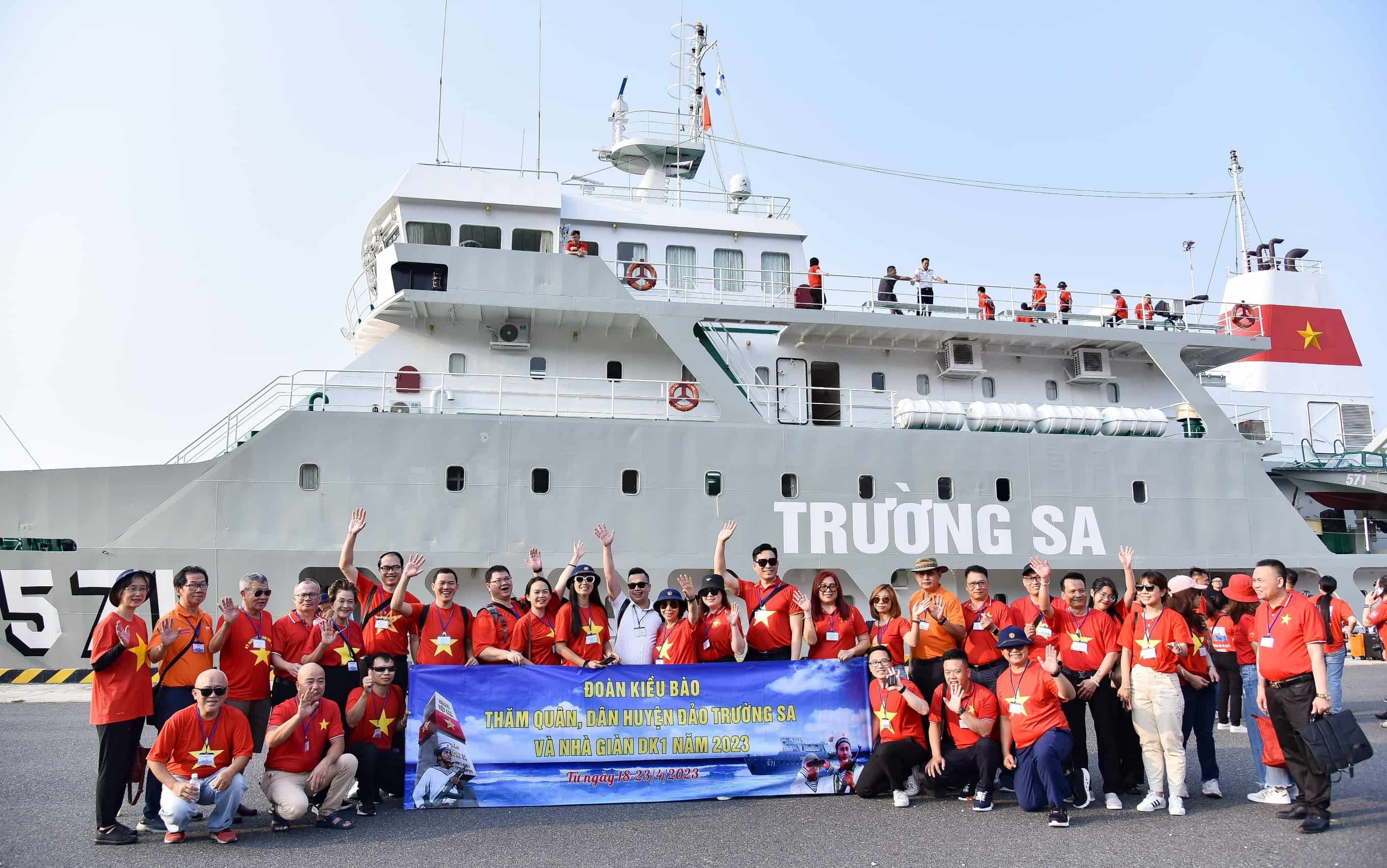 |
| An overseas Vietnamese delegation visited Truong Sa island and DK1 Flatform in 2023. (Source: VNA) |
From 1986 to 2022, with the trend of humanity turning towards the seas and oceans, many coastal countries of islands and archipelagos have focused on maritime policy and considered it a critical factor in strengthening the potential of the nation, affirming its position in the region and the international arena.
Having an essential position in geostrategy, geopolitics, geoeconomics, and military, the East Sea is always an area that attracts extraordinary attention from countries in the region and major world powers. Big outside countries are increasingly intervening deeply in the East Sea region, worsening the regional situation, especially disputes over sovereignty, sovereign rights, and jurisdiction between conflicting countries around the East Sea, which is even more complicated.
All of the above issues have significantly impacted Vietnam's security and sovereignty over its islands and islands, placing Vietnam in front of difficulties and challenges that need to be overcome. Firmly protecting the independence of the Fatherland's sea and islands has become a more urgent task than ever for the entire Vietnamese people.
To meet the requirements of building and developing the country, as well as to firmly protect the sovereignty of sea and islands in the new situation, based on accurately grasping the reality of the situation and thoroughly promoting the spirit of independence, autonomy, and creativity, Vietnam has set out the right policy, firmly protecting sovereignty, sovereign rights, jurisdiction, and national interests at sea in the face of countless difficulties and challenges, under the correct and wise leadership of the Communist Party of Vietnam.
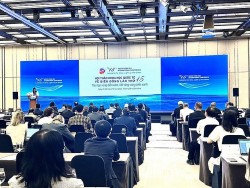
| Grey Zones and Blue Seas in the East Sea - Good to Know (Part 1) The 15th South China Sea International Conference (October 25-26, 2023) has set out the criteria "Luminate the grey, Light up the green". |
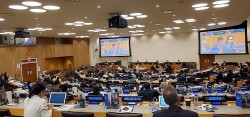
| UNCLOS 1982: Establishing and strengthening the legal order at sea, maritime cooperation for peace and sustainable development (Part I) In the Preamble of UNCLOS 1982, member countries affirmed their desire to 'resolve all issues related to the law of the sea' and 'establish a ... |
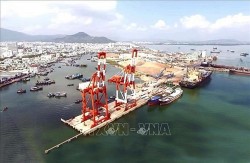
| Vietnam Maritime Corporation inks deal with global consulting firm WVR/VNA - The Vietnam Maritime Corporation (VIMC) recently signed a contract with the global research and strategic consulting firm Roland Berger to develop itself until ... |
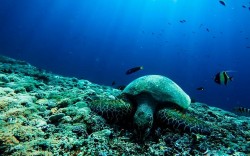
| BBNJ Agreement - a new step in international law and future prospects (Part I)* WVR - On June 19, 2023, the Intergovernmental Conference agreed to approve the Agreement under the United Nations Convention on the Law of the Sea ... |
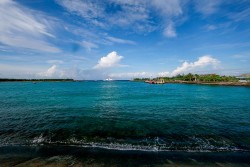
| East Sea: The maritime territory cost a lot of research in history WVR - The East Sea region is one of the sea areas where sovereignty disputes over its islands and archipelagos, sovereign right and jurisdiction disputes ... |









